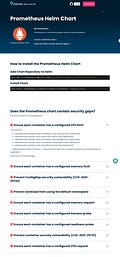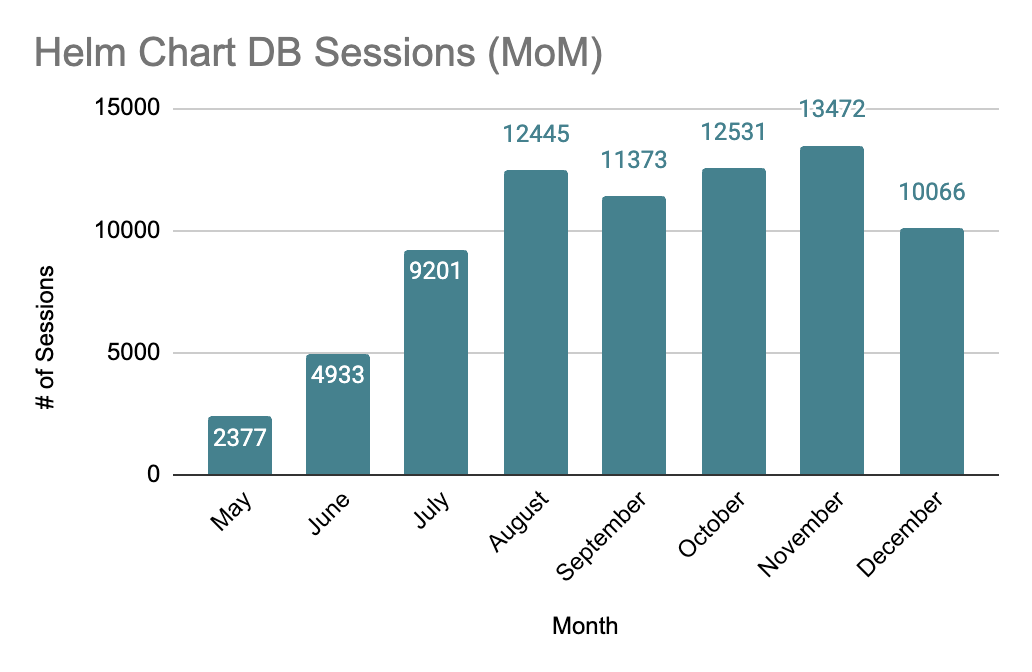During my first few months at Datree, my focus was primarily on generating quick wins: I revamped our YouTube marketing strategy, discontinued underperforming activities and set up dashboards to monitor our performance.
The outcome was a sustainable growth system that required careful maintenance, but still left me enough time to explore long-term strategies. One such strategy was programmatic SEO, a concept that Datree’s co-founders and I discussed from our very first meeting.
The three of us heard about Snyk Advisor, Snyk's programmatic SEO project. It's a database of open-source packages that draws hundreds of thousands of organic visits a year. Inspired by Snyk's success, we sought to develop our own programmatic SEO project.
The question was, what kind of project would it be?
I gathered a meeting with Datree’s co-founders to discuss this exact question. I outlined the requirements:
The topic needed to be broad enough to generate a vast amount of long-tail keywords. This is the beauty of programmatic SEO: You don't compete for the few keywords with high volume that everyone targets. Instead, you compete for thousands of keywords with low volume that no one targets.
The topic had to be relevant to Datree's product. The programmatic SEO project should present an opportunity to demonstrate Datree's functionality, i.e., scanning Kubernetes resources for misconfigurations. Otherwise, it wouldn't generate any business value.
“So, any ideas?” I asked.
For a few minutes we sat there in silence, deep in thought. And then, Datree’s CEO said: “Helm charts.”
Helm charts? Yes, Helm charts, the packages engineers use to install applications on Kubernetes. It was brilliant: There are thousands of them, and Datree scans them for misconfigurations — it was exactly what we needed.
I returned to my desk to formulate a plan. We would gather all existing Helm charts and create a database. Each entry would comprise two sections: installation instructions and a Datree scan identifying potential misconfigurations.
While excited about the potential impact on Datree, I wasn't ready to plunge in headfirst. This project would require significant resources, including around 2-3 weeks of development time. I needed to ensure its viability before making such an ask.
So, I launched a proof of concept (POC). Ideally, this database would be created automatically, based on data scraped from the internet and scripts we would write. But for the POC, I manually created a page for the Prometheus helm chart.
This is how it looked like:
As you can see, it had two sections:
Metadata and instructions on how to install the chart.
Datree scan of the Prometheus helm chart, which included a link to Datree’s docs to further learn about the detected issues.
Before fully developing the database, I wanted to confirm it is actually working, and in that context, “working” meant that visitors would scroll to the second section, read the misconfigurations and click the link to Datree’s docs. I figured that achieving 5% conversion rate from visit to click would be sufficient to classify the POC as successful.
It was now time for testing. However, I couldn't depend on SEO for this task. While the full project is intended to draw in organic traffic from search engines, using SEO to test the POC was not practical. It could take months for the page to begin generating substantial organic traffic (which is why it's a long-term project).
Rather than relying on SEO, I opted for SEM and launched a paid campaign on Google Search. This campaign targeted the keyword "prometheus helm chart" and sent traffic to the test page. I spent several hundred dollars on these ads, which brought about approximately 80 visits. I then analyzed the traffic using Google Analytics.
The outcome? Almost half of the visitors scrolled to the bottom of the page (indicating they read the entire list of misconfigurations), and 12% clicked on the link leading to the documentation.
This was a success, a significant success.
I presented these results to Datree’s co-founders and immediately received approval to build the complete database. A developer was assigned to me, and after several weeks of work, we launched the Helm Chart DB: An extensive collection of over 3000 helm charts, complete with installation instructions and misconfiguration analyses.
While it took some time for the project to gain traction, it was quicker than I anticipated. We launched at the end of April, and by May, we already had over 2,000 sessions, even noticing some product-qualified signups clearly attributable to the project.
However, this was only the start. Each month, the database ranked for an increasing number of keywords, and our traffic steadily grew. By August, four months post-launch, we were thrilled to see we'd surpassed the 10,000 mark and had actually generated over 12,000 sessions:






Thanks! My team worked on Snyk Advisor. I'm glad they're getting recognition!
Nice work. For non-programmers, would you recommend a WordPress import plugin, or something else?